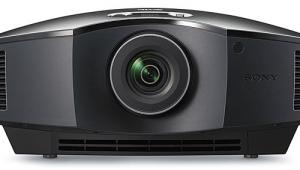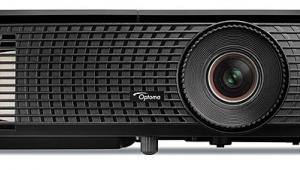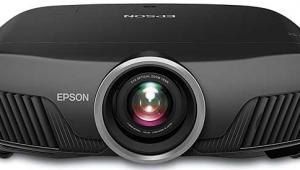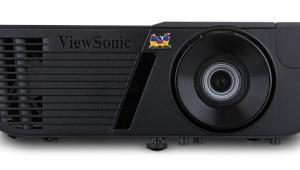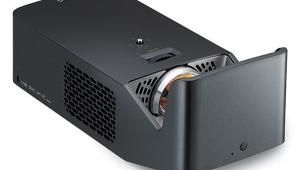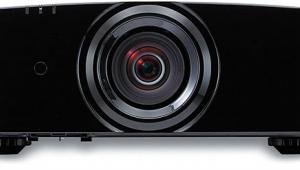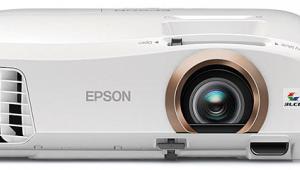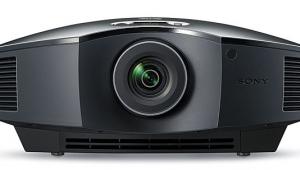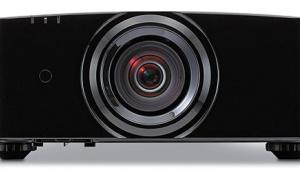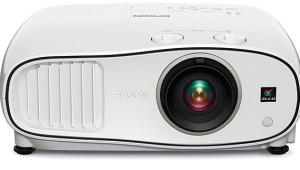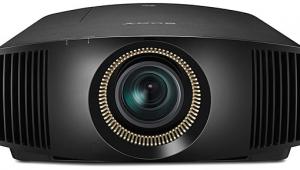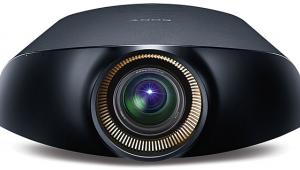Sony VPL-VW1000ES 4K SXRD Projector Page 2
The projector also offers 10 pre-programmed Gamma Correction settings, plus off. Gamma affects a display’s output in the mid-brightness region. Sony also offers a program called ImageDirector3 that you can use with a PC to manually tweak the gamma. This program didn’t come with our sample and therefore wasn’t tested.
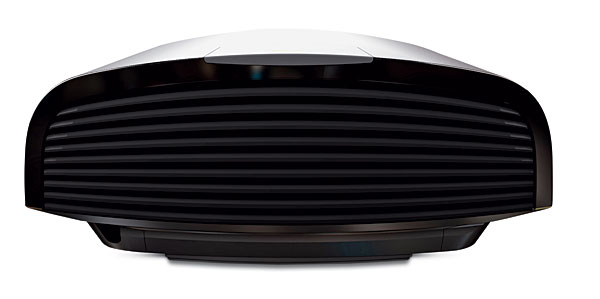
The Cinema Black Pro menu includes the settings for Sony’s Advanced Iris feature plus two lamp settings, high and low. The Auto Full and Auto Limited settings operate the iris dynamically to enhance contrast, closing it down in dark scenes and opening it up in brighter ones. There’s also a manual option that offers a range of fixed iris settings, plus an off position that opens the iris all the way. I used Auto Full for most of this review.
Dynamic irises, including this one, often produce non-uniform gamma, either as a side effect of their operation or intentionally. In the VPL-VW1000ES, a gamma setting of 2.6 averaged approximately 2.0 across most of the brightness range (a lower gamma number results in a lighter image). This increased to 2.44 at the darkest measured point (20 percent peak brightness). In exchange, however, Auto Full provides the projector’s deepest blacks, most impressive shadow detail, and highest full-on/full-off contrast ratio.
The projector refreshes images at a rate of 120 hertz, except for 24p material, where it refreshes at 96 Hz. It adds either repeated or interpolated frames to the source material as needed to match the appropriate refresh rate.
Motionflow is Sony’s motion smoothing/frame interpolation feature. It consists of two separate processes that can be used either together or separately: Film Projection (on, off) and Motion Enhancer (off, low, and high). Film Projection adds darkened frames between real frames. Motion Enhancer adds interpolated frames between real frames to reduce motion smear. These features can reduce image judder, sometimes dramatically. But they also make film-based sources look like video—often called the soap opera effect.
You may like motion interpolation; some viewers do. I dislike it intensely and can’t tolerate it for more than the few seconds it takes me to determine it’s on. That’s no dig at Sony’s implementation; I dislike them all. I performed the testing for this review with Motionflow turned off. As with all LCD and LCOS projectors, there’s a bit more motion smear here than with, say, a DLP projector or a plasma flat panel, but I didn’t find it distracting.
 Sony provides the usual 3D features, including compatibility with all current 3D formats plus 2D-to-3D conversion. The 3D sync transmitter is built into the case, but you can purchase an optional second transmitter to use externally if needed. As noted, we’ll be checking the 3D functions and performance with a future sample.
Sony provides the usual 3D features, including compatibility with all current 3D formats plus 2D-to-3D conversion. The 3D sync transmitter is built into the case, but you can purchase an optional second transmitter to use externally if needed. As noted, we’ll be checking the 3D functions and performance with a future sample.
Sony’s backlit remote control is very similar to those that come with the company’s recent projectors. It’s an excellent design, although I find the blue backlighting less readable than red or green in a darkened room.
Performance: 1920 x 1080 2D Sources
For this review, we positioned
the projector just over 21 feet from a 118-by-66.3-inch Stewart StudioTek 130 G3 screen (gain 1.3). As always with projectors, consult you dealer or the manufacturer to ensure that the throw range available in your room is compatible with the projector’s zoom range and your desired screen size. Be sure to account for the projector’s depth in your determination. Sony specifies the throw distance for the VPL-VW1000ES as 1.27 to 2.73; this is said to be reduced to 1.68 to 2.73 if you use the lensless anamorphic memory setting. [Editor's Note: See the additional explanation from Sony regarding this projector's throw distance in the review comments below.]
As shown in the Video Test Bench chart, the Sony passed all of our standard video processing tests except Motion Adaptive (MA), a test that includes both stationary and moving elements. The MA failure was borderline—that is, the call could have gone either way. The HD test includes a rotating bar against a stationary vertical resolution pattern. The bar exhibited jaggies that were just slightly too prominent at its near horizontal position (the most difficult part of the test). This did not translate into visible problems on most normal material. I used Blu-ray players from Oppo (the 2D-only BDP-83) and Sony (the 2D and 3D BDP-S570) for all of my SD and 1080p HD testing during this review. When the Oppo player converted this 1080i test pattern to 1080p, the jaggies were greatly reduced. This indicates that this shortcoming originated in the Sony’s 1080i-to-1080p deinterlacing, not its 1080p-to-4K upconversion. Sony acknowledged the issue in a later communication and said the deinterlacer should be better optimized in full production samples.
Good as it was, upconversion to 4K was not flawless. A so-called Pixel Phase pattern (which shows, among other things, how well a display can perform with adjacent on/off pixels) was less than pristine. That pattern was also discolored, although this is common in LCOS-type projectors. Neither issue had a noticeable effect on real-world program material at a normal viewing distance. The upconversion also tended to slightly exaggerate film grain, although this was rarely distracting and more evident in still images (or in pause) than moving ones.
When I tried to assess the quality of the 4K upconversion in the Integra DHC-80.3 surround processor (also reviewed in this issue) to compare it with the Sony’s, the HDMI handshake between the Integra and the Sony resulted in colors that were grossly distorted. This proved to be another glitch in our early sample that Sony had already resolved; they assured us that full production units will properly accept an upscaled 4K signal from any HDMI-compliant processor. We’ll check this later as well.
Overall, I felt the upconversion in the Sony, while not perfect, will satisfy all but the nit-pickiest viewer. Given a good 1920 x 1080 HD source, the projector produced some of the best 2D images I’ve yet seen. Without a doubt, a big factor in this was the punchy, 21-foot-lambert brightness I achieved on this 1.3-gain screen (high lamp mode, contrast at 85, Advanced Iris set to Auto Full dynamic mode, and 160-plus hours on the lamp). Even in the low lamp setting, the peak output was over 16 ft-L, but I preferred the high setting, which should still produce 16 to 17 ft-L on a 1.0-gain screen of the same size.
